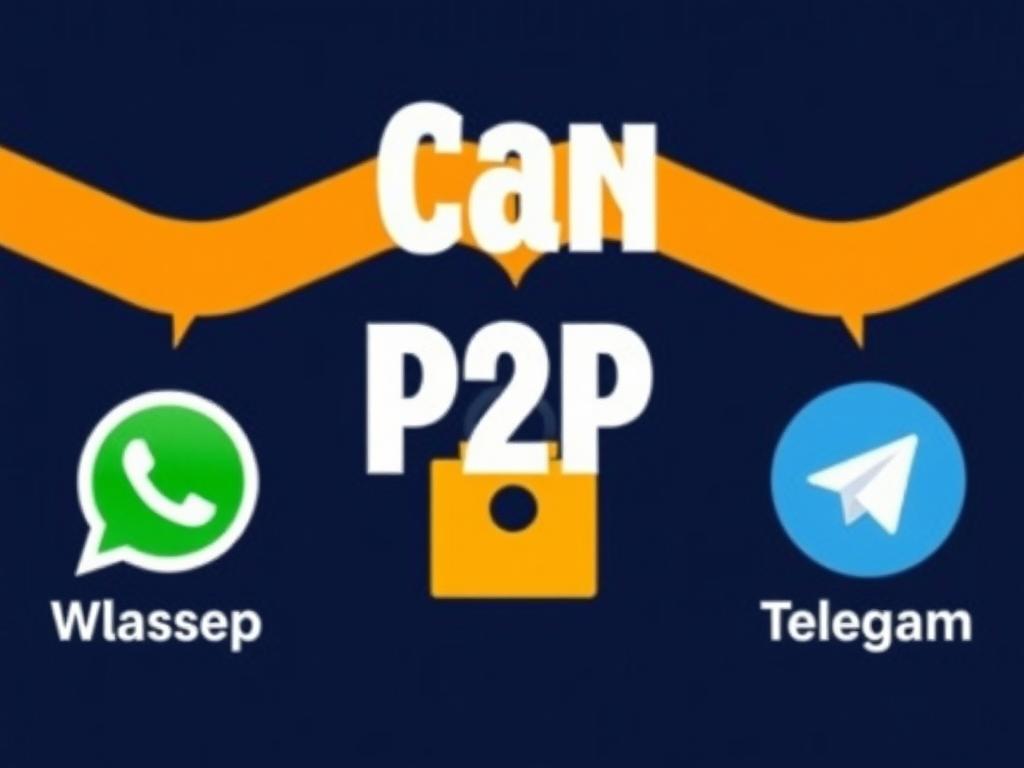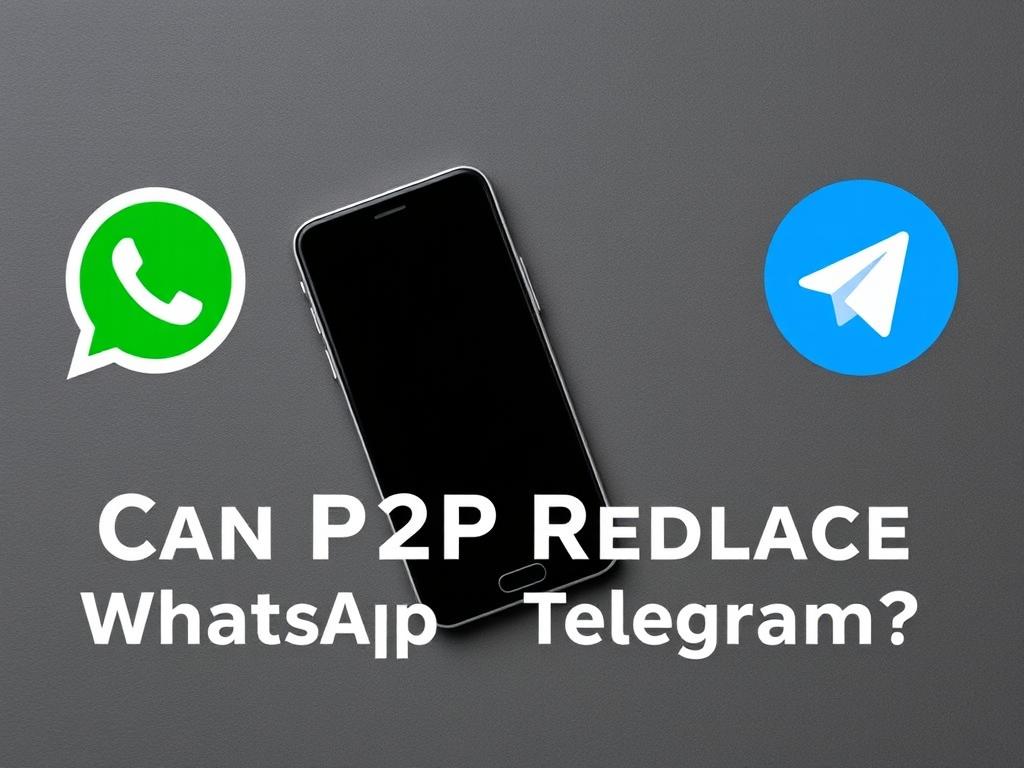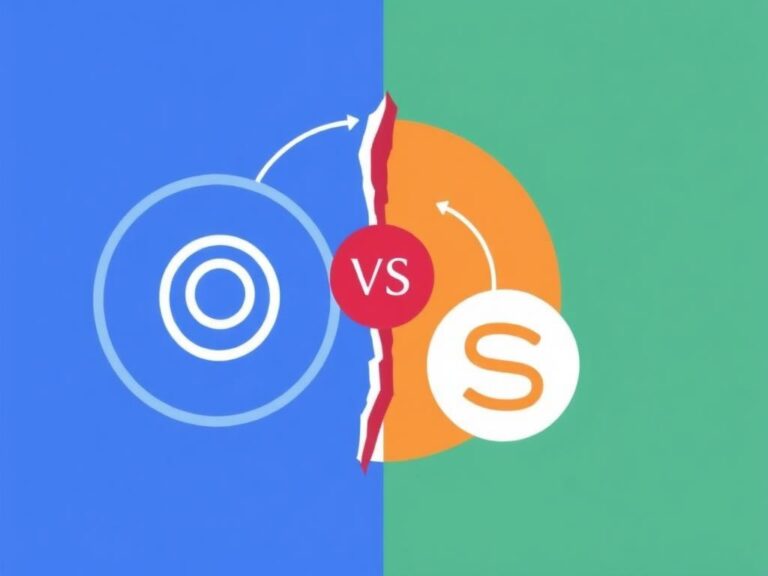Can P2P Replace WhatsApp and Telegram? Exploring the Future of Messaging
In today’s hyper-connected world, messaging apps like WhatsApp and Telegram dominate our conversations. They have become indispensable tools for both personal and professional communication. But behind their sleek interfaces and billions of users lies a centralized system that controls the flow of every message and stores mountains of user data. This has sparked a growing interest in decentralized alternatives, especially P2P (peer-to-peer) messaging platforms. So, can P2P replace WhatsApp and Telegram? Let’s dive into the fascinating world of P2P messaging and see how it stacks up against the traditional giants.
Understanding P2P Messaging
Peer-to-peer messaging is a decentralized communication method where messages are sent directly from one user to another without passing through central servers. This approach contrasts with WhatsApp and Telegram’s centralized servers that manage message routing, storage, and encryption. In a P2P network, every device acts as both client and server, creating a distributed web of communication that offers some unique benefits.
One of the core ideas behind P2P systems is to increase privacy and reduce reliance on centralized entities that can be vulnerable to hacking, censorship, or government surveillance. Additionally, P2P messaging removes single points of failure, meaning the network continues functioning even if some users disconnect. This robustness can be particularly appealing to privacy-conscious users or those in regions with heavy Internet censorship.
How Does P2P Messaging Work?
Imagine a group of friends who decide not to use a middleman when exchanging notes. Instead, they pass messages directly to each other. P2P messaging functions similarly but through devices and the Internet. Each participant’s device connects with others directly, or through a network of peers, to transmit encrypted messages.
Technologies such as Distributed Hash Tables (DHT), blockchain, or mesh networking are often employed to help find peers and route messages efficiently without a centralized server. This distributed approach ensures that even if some devices go offline, messages can still reach their destination by hopping through other peers.
WhatsApp and Telegram: The Centralized Messaging Powerhouses
WhatsApp and Telegram have built their massive user bases by offering user-friendly, fast, and reliable messaging services. Both support a wide range of features including group chats, voice notes, video calls, and media sharing. However, they differ in their policies and technical setups.
| Feature | Telegram | |
|---|---|---|
| Encryption | End-to-end by default | End-to-end only in secret chats |
| Storage | Messages stored on central servers temporarily | Cloud storage with synced history |
| Ownership | Owned by Meta (Facebook) | Independent, with a focus on privacy |
| User Base | Over 2 billion | Over 700 million |
While they offer robust encryption and versatile features, the centralized nature of WhatsApp and Telegram means user data still passes through and is often stored on central servers. This centralized model makes the services simpler to operate and monetize but also introduces risks, including data breaches or account suspensions without recourse.
Benefits and Challenges of P2P Messaging Compared to WhatsApp and Telegram

Privacy and Security

P2P messaging systems excel in privacy. Since messages do not transit through centralized servers, the chances of mass data collection diminish significantly. This decentralized approach mitigates surveillance risks, making it hard for governments or hackers to intercept messages. End-to-end encryption can be embedded in the P2P protocol as well, adding a further layer of privacy.
However, P2P networks face unique security challenges. The direct connections require reliable verification methods to ensure the identity of peers. Without central authorities, users might be more vulnerable to impersonation or man-in-the-middle attacks if the network isn’t carefully designed.
Scalability and User Experience
WhatsApp and Telegram gain advantages in scalability due to their infrastructure. Their centralized servers help deliver messages instantly and provide a consistent user experience with multimedia support, message history synchronization, and cross-device access.
P2P networks, by contrast, can struggle to maintain performance as the user base grows. Routing messages among many peers can introduce delays, and managing message sync across devices is more complex without a central repository. Also, P2P apps often require users to stay online or have their devices active to relay messages, which can impact battery life and convenience.
Feature Comparison
- Group Chats: Easy to manage in WhatsApp/Telegram; complex coordination in P2P networks.
- File Sharing: Centralized servers optimize speed; P2P depends on peers being online.
- Media and Message History: Cloud backups make history accessible anywhere on WhatsApp/Telegram; P2P often lacks reliable storage.
- Moderation and Abuse Control: Centralized control helps fight spam and abuse; P2P networks face challenges without central control.
Examples of P2P Messaging Apps
Several projects have attempted to bring P2P messaging into the mainstream. Here are some notable examples:
| App | Key Features | Challenges |
|---|---|---|
| Session | Decentralized routing, no phone number required, strong privacy | Relies on onion routing, some latency issues |
| Briar | Works offline via Bluetooth/Wi-Fi, strong security, ideal for activists | Limited to small networks, bandwidth constraints |
| Matrix (with decentralization components) | Open standard, federation model, bridges to other apps | Complex setup, partly centralized with server homes |
While these apps provide exciting alternatives, their adoption remains low compared to WhatsApp and Telegram. They often prioritize privacy and decentralization at the cost of ease of use or feature richness.
Will P2P Replace WhatsApp and Telegram?

Whether P2P can replace WhatsApp and Telegram hinges on numerous factors. User behavior favors convenience, reliability, and seamless experiences. For most people, the centralized model currently ticks these boxes better, offering fast message delivery, extensive features, and cross-device support.
At the same time, growing concerns about privacy, data ownership, and censorship are pushing some users toward decentralized alternatives. P2P messaging is still maturing and needs to overcome challenges like scalability, user onboarding, and supporting advanced features to be truly competitive.
Developers are actively innovating, blending P2P principles with more traditional architectures to forge hybrid systems that seek the best of both worlds. Adoption also depends on network effects: WhatsApp and Telegram are entrenched due to their massive user bases. For P2P to replace them, these apps will need to attract millions of users quickly, which is no small feat.
Key Factors That Could Drive P2P Messaging Adoption
- Privacy regulations: Stricter laws could prompt users to seek decentralized options.
- Technological advances: Improved routing algorithms and storage could enhance performance.
- Awareness: More education about privacy risks might push users to adopt alternatives.
- Integration: Hybrid apps blending P2P with central servers might ease the transition.
Summary Table: P2P vs WhatsApp and Telegram
| Aspect | P2P Messaging | WhatsApp and Telegram |
|---|---|---|
| Centralization | Decentralized, no central servers | Centralized servers |
| Privacy | High, limited data sharing | Moderate, with central points of data |
| Scalability | Challenges with large user bases | Highly scalable |
| Feature Richness | Basic to moderate | Extensive features and integrations |
| User Experience | Can be inconsistent | Generally smooth and reliable |
Conclusion
P2P messaging presents an intriguing vision for the future of communication—one where privacy, control, and censorship resistance take center stage. However, despite its clear advantages in security and decentralization, P2P is unlikely to fully replace WhatsApp and Telegram in the near future. The dominant apps benefit from established user bases, sophisticated features, and high-performance infrastructures that P2P networks still struggle to match. That said, as privacy concerns mount and technology evolves, P2P approaches could carve out a significant niche or even revolutionize how we message down the line. For now, the coexistence of centralized giants alongside emerging decentralized platforms appears to be the most realistic scenario—a dynamic equilibrium where users can choose what fits their priorities best.






